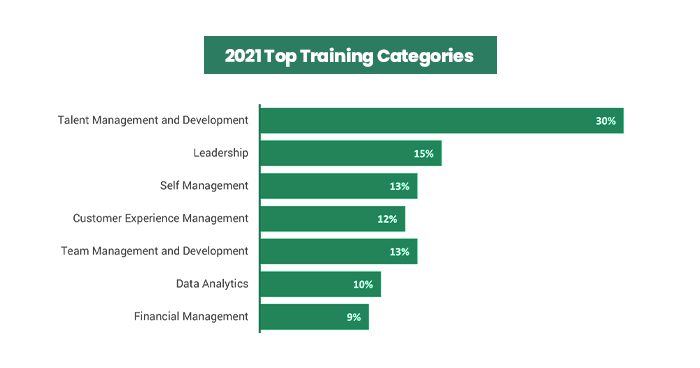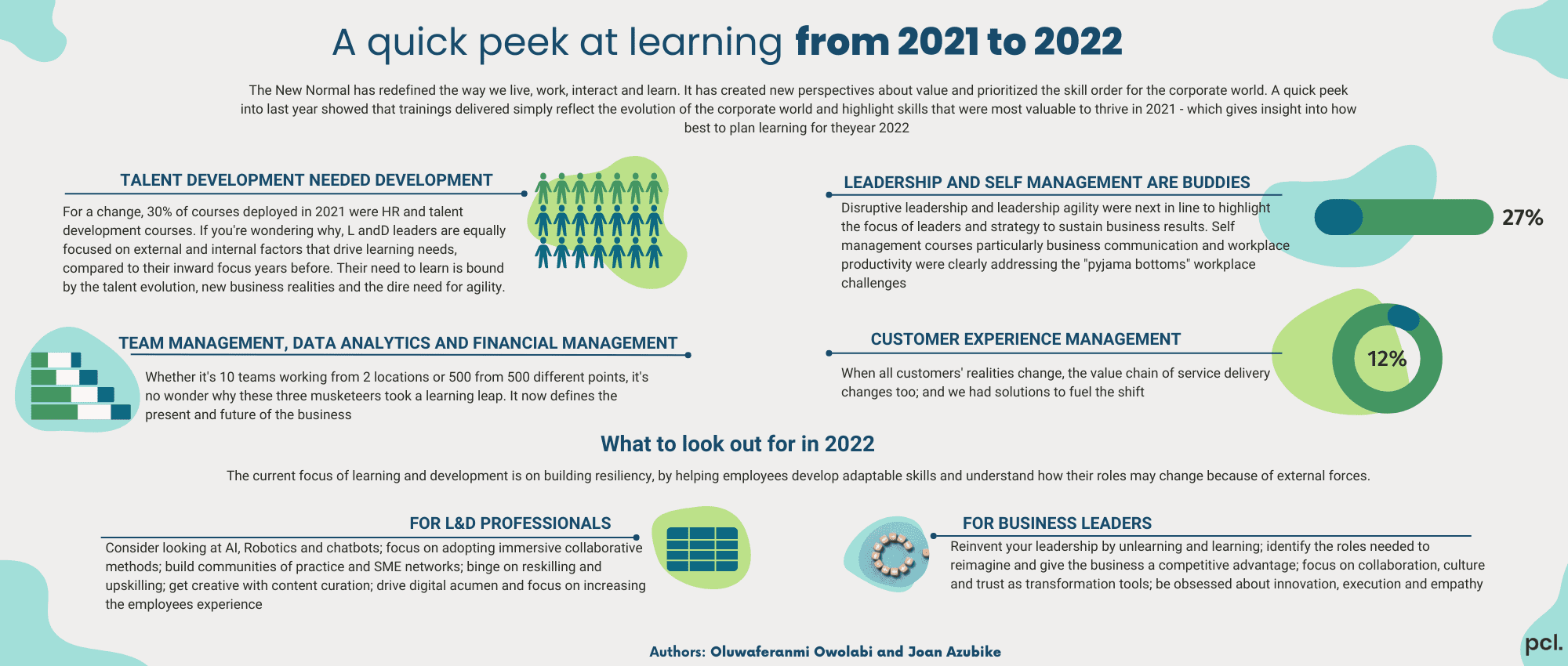Current workplace trends have accelerated the need to enhance skills and revamp talent development strategies. Over the past two years, training and learning strategies have stemmed from the top of the organisation chart. A key difference that was observed in 2021 is that Learning and Development (L&D) leaders are now equally focused on external and internal factors that drive learning needs compared to their inward focus years before.
More companies are creating proactive plans to handle major events that can affect employees and their internal knowledge, and L&D leaders are placing the highest priority on increasing engagement, employee experience and incorporating employee feedback into intervention design.
An overview of course categories prioritised in 2021 highlights the following:
Talent Development professionals needed some training themselves to understand the work evolution
- Leadership and self-management skills were a top priority because of the need to work independently and maintain agility
- Customer experience management evolved because of the presence gap, new needs, and unarticulated needs from the new normal. There was a need to sustain business through customer retention from tools to technologies and response strategies.
- Team management became a new priority because of how widely spread teams became, the ability to collaborate without borders and deliver results through cyberspace
- Data analytics became the fastest way to understand the evolution of people, business, talent and work, and all occurrences became trends worth studying; and, therefore, worth learning how to interpret.
Some external factors that influenced training and learning initiatives in 2021 and will likely do the same this year are:
- Executive direction/business manager requests
- Needs or gap analyses
- New external factors (change, disruption, competition)
- Continuing or new work-from-home options
- Outdated tech/materials, manuals, formats (e.g., flash retirement)
- New internal processes
- Employee feedback/requests
- New diversity and inclusion initiatives change in the business (e.g., new hires, retiring employees
The current focus of learning and development is on building resiliency by helping employees develop adaptable skills and understand how their roles may change because of external forces. Upskilling and reskilling in more versatile ways can also help companies meet undefined needs. L&D’s role in helping employees develop flexible skills could go a long way toward meeting changing business challenges.
Organisations are increasingly focused on making learning an ongoing art of employment rather than a once-a-year, check-the-box exercise.
This year, the image below shows how L & D teams are prioritising their efforts and initiatives:
Most organisations are now looking at virtual instructor lead training as a long-term practice for learning and will potentially redesign some of their basic programs. Since 2021, there has been an increase in video and micro-learning use while instructor-led and physical visual aids (infographics, checklists, guides) have maintained their levels.
Our goal is to curate courses and deploy interventions that connect with your talent realities and create a sustainable path to your big picture
Our top 5 priorities or metrics for programmes this year are:
- To address new skill areas that will help businesses win the war for talent
- To deploy programmes via virtual and hybrid platforms that support learning on-the-fly
- To iterate on all existing programmes in ways that reflect
- Culture and diversity
- Employee engagement
Written by:
 |
 |
| Joan Azubuike
Assistant Consultant |
Feranmi Owolabi-Okojie
Learning Innovation Lead, Training |



